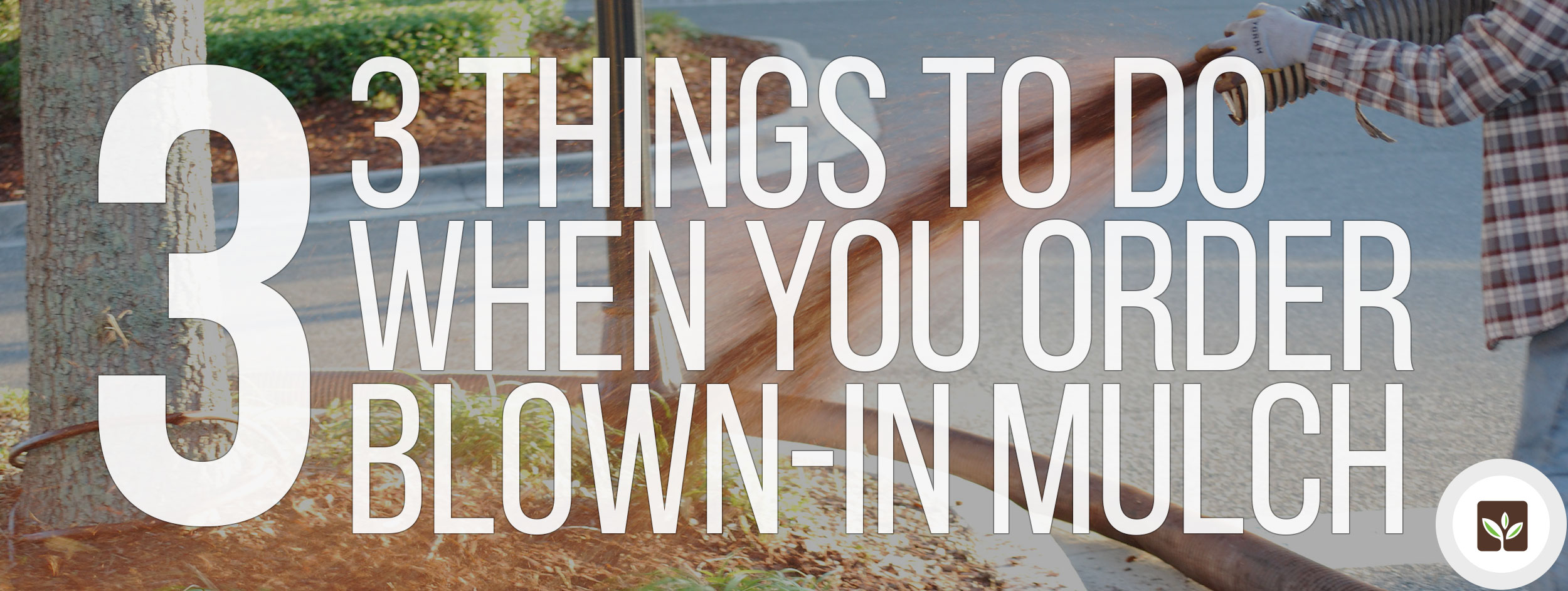
3 Things to Do When You Order Blown-in Mulch
Want to sit back and relax while your landscape is transformed with a beautiful layer of new mulch? Nothing beats blown-in mulch, a cost-effective solution that involves blowing bulk mulch in place rather than spreading it manually. Having your landscape professionally mulched can save you time and effort. It can even save you money on labor costs if you were planning to hire a crew to do the job.
Here’s three things we recommend you do when ordering blown-in mulch for the first time.
Know What Type of Mulch You Want
Nearly any type of organic mulch you like can be blown in place from light shredded mulch to heavier chip mulch. Before scheduling professional mulching, you need to know what type of mulch will work best for your landscape. Your choice goes far beyond just choosing the right color.
A light mulch will work well in a flat area that drains well. Hardwood mulches are recommended for hilly areas and berms because it can resist being washed or blown away. Inorganic mulches like gravel or rubber are good for areas where you don’t want to grow anything, especially areas that are prone to drainage issues. In garden beds and berms, organic mulches are always best for amending the soil and protecting your plants.
The type of mulch you choose will also affect how long it lasts. Shredded bark and other fine mulches decompose fairly quickly and need to be replaced every year. Large chunk mulches like pine bark nuggets, a popular option in Georgia, last the longest.
For some applications, it’s a good idea to consider specialized mulch. We recommend certified playground mulch for dog runs, walking paths, equine centers, and playgrounds to reduce the risk of injury in a fall.
Determine the Amount You Need Delivered
You’ll need to know how much mulch you’ll need before scheduling installation. The mulch installer can help you decide the right amount based on the cubic yards you want to mulch and the type of mulch you choose. You can also use our mulch calculator to trace the areas of your property using Google maps to determine the amount of mulch you need.
That still leaves it up to you to get an estimate of the total area you want mulched. Get a rough estimate by measuring your berms, flower beds, and other areas.
In general, the first mulch application should be 3-5″ deep. This depth can help regulate your soil temperature and retain moisture in the ground. If mulch is applied too thickly, it blocks water from reaching plant roots. This can cause mold, insect problems, and plant death.
After the area has already been mulched once, subsequent mulch deliveries will be designed to replenish or top off the mulch that has broken down from the year before. Top dressing your mulch may need to be done every year if you get fine shredded mulch or every three years for very thick mulch.
Skip the Weed Block Fabric
Landscaping or weed blocking fabric seems like a great idea. It’s designed to block weeds from growing so why not add it over your landscaping before mulching? Unfortunately, it can cause more harm than good. Weed blocking fabric is great to use under gravel when you want to block all plant growth. In gardening or flower beds, it’s not so great.
When landscape fabric is installed under regular organic mulch, it blocks the beneficial composting process. Over time, mulch breaks down and amends the soil with nutrients and compost. When the weed block material is installed, the decomposed mulch just sits on top of it instead of contributing nutrients to your plants.
The other problem is landscape fabric is only a temporary means of blocking weeds. As the mulch breaks down and builds up a layer of compost on top of the fabric, weed seeds that get blown over the mulch germinate. Your flowerbed will still get some weeds without the benefits mulch can offer.
You don’t need to tear out the landscape fabric you already have installed if you’re planning to schedule mulch blowing. Just don’t add any new fabric to your landscape before your mulch is placed.
Categories: Blown-in Mulch, Georgia Mulch, Mulch Installation | Tags: Blown-in Mulch, Georgia, Mulch Installation